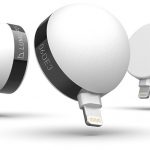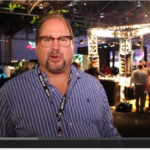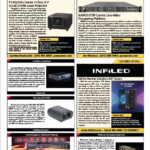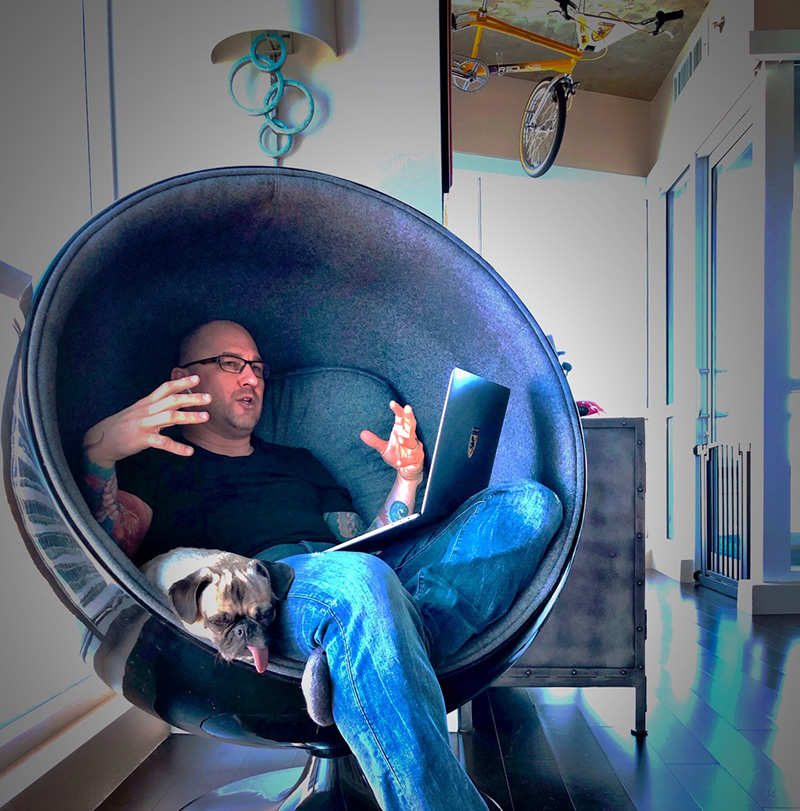
Patrick Dierson’s The Activity Offers Luxury Previz Suites in Vegas
Patrick Dierson is always busy, even when the rest of the industry seems to be on hiatus. Besides being the principal designer at The-Activity (the-activity.com), a full-on production design firm located in Las Vegas that works across the live entertainment genres of concert touring, music festivals, corporate experiential launches, and broadcast television, he recently even opened up an online store titled Th3 Gear (th3gear.com). But what we are here to discuss today is “The Farm” (th3farm.com), the company’s luxury previsualization studios located right off the famous Las Vegas Strip.
A Little History
After growing up in a New York City suburb (on Long Island), Dierson pursued dual career paths, learning the basics of the live entertainment business and serving the U.S. government for several years. “In the end, my service required me to learn a trade specific to the entertainment industry.” So while in service to his country, he found himself starting his career in entertainment.
“In 1993, I went to work for Farralane Lighting, quickly followed by a stint at Group One, Ltd. They were the United States sales distribution company for brands such as Clay Paky, Celco, ElektraLite and MA Lighting. I became a product specialist for them, concentrating on Clay Paky fixtures as well as all control consoles in their lineup.”
He left there in 1998 to pursue a career as a console programmer. “At the time, the Whole Hog II was the premier moving light console, and thus I made a big push to learn that, but I also had a good knowledge of less popular but equally complicated consoles and controllers such as the Celco Navigator and Masterpiece 108 from my time at Group One.”
Dierson reached out to friends, and they sent him loaner consoles for their proprietary systems such as the Status Cue and Case II desks. In turn, Dierson became an expert on systems such as these and ended up being in high demand because there weren’t too many professional programmers out there who knew these quirky controllers.
“It wasn’t too long into this process when the series one grandMA was released; a product line that I had already been working with in its alpha stage while back at Group One,” Dierson adds. “I progressed with that as my main console of choice from there on out.”
After gaining a reputation and client base while located in NYC, he and his wife Dee decided it was time to get The Activity running in full force, which also led to the couple’s decision to relocate the business.
“New York City is a magical place and I really feel, that just like the military, everyone should have to go through it for at least a year. It will teach you a level of self-discipline that you never knew that you were capable of…or it will tear you to shreds because you can’t handle it. It’s also notoriously expensive, and I simply couldn’t afford to love New York anymore. From a business perspective, if you’re going to do things on the up-and-up, you’re going to pay a phenomenal amount of taxes, and New York City is not the most freelancer-friendly state in the union.” They chose Vegas. “It was the only 24 hour city other than NYC that we liked, and Nevada is extremely business friendly.”
Grasping Previz
Dierson purchased his first copy of WYSIWYG in 1999. “I had made the investment in a personal copy to utilize as both a CAD design tool as well as a pre-programming tool. Another programmer friend had recently become an expert in the system. Rodd McLaughlin had teamed up with Norm Schwab, Tom Thompson, and others to create a company called Prelite LLC, and they were the first actual previz studio that I came in contact with. They had studios in New York City, San Francisco and L.A., later creating the concept of mobile previsualization systems. They were true pioneers not just in formulating a studio-based business plan but also in regards to the experience and hospitality involved with a service-based business in this lane. I started to use Prelite extensively on projects through the early 2000s, and loved the service.”
Over the years, Dierson watched as various companies upped their game and offered new and exciting features. “Systems such as ESP Vision and L8 would slowly start pushing the realism of the graphics to new heights and ultimately kept the entire community on its toes. Then, and I say this jokingly and lovingly, MA Lighting came in and ruined the whole damn party by giving grandMA3D away for free.”
Calling grandMA3D “utilitarian,” Dierson adds that “it works really well, and it’s my favorite to use, but that’s only because I know what I’m looking at when I watch its simulations. It is absolutely not what I would show a musical artist, though. When you’re trying to convey the look of a stage show to someone who traditionally sees things with their ears, you really want to spend the money to use something that will render more realism. But herein lies the beauty of the previsualization software industry. There is a place and time for everyone’s offerings, and there are some really great solutions out there for every situation. There are also some truly next-level offerings on the horizon as we await the official release of Imaginary Labs’ Carbon software. They are taking visual realism to the next level — in being able to simulate not just light beams better than the competition, but also elements such as pyrotechnics.”
When asked to define his company Patrick notes that “a lot of people describe The Activity as a collective, and they’re not necessarily wrong. It is a collective of people, but the collective shifts quite abruptly. We have a core group of people that live and operate within the entity who are not just designers. We have producers, art directors, technical directors, etc. Some live here full-time while others are white-labeled and merely operate from the umbrella. The Activity’s main purpose is to provide a production design backbone for just about anyone that needs it, and by “production design,” I mean that in the true sense of the words. We concentrate on the engineering and delivery aspect of someone’s creative vision.”
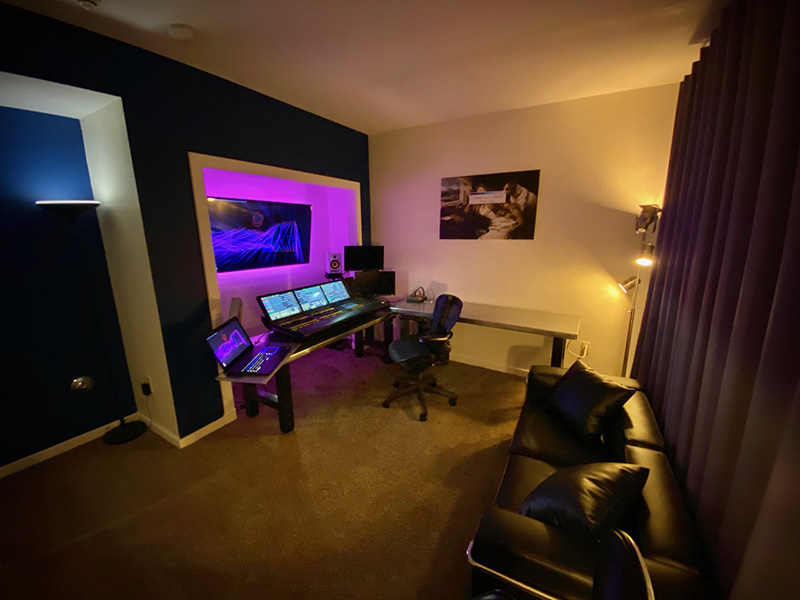
The Farm
The city of Las Vegas is the entertainment capital of the world. But what has really become a major attraction the last few years is all the big music legends playing long-term residencies in Vegas showrooms. They are countless. With the quick turnarounds in the venues coupled with the unrealistic short programming times given to these act’s production teams before opening night, previz has become an industry standard. Any good tour manager will work these programming costs into their show budget. There is nothing worse than having your artist step onto a new stage set for the first time and the LD doesn’t have a scripted show all set to work off of. This is why you need a place like the Farm, especially in Vegas.
Nobody does mere eight-hour days while programming, and they certainly don’t hold banker’s hours. The one constant every LD wants is a quiet comfortable space where they can program any time of day, preferably in luxury. The Activity required a suite they could utilize for their personal projects, but why not open a space up that all production people could utilize? A seed was sown in Dierson’s mind.
As for the name, Dierson admits that, while “I couldn’t grow a vegetable with Old McDonald helping me himself, there’s a tie-in to my history in just about everything we do, and the choice to go with the name ‘The Farm’ is no exception. The Farm is a representation of our end goal. Farms are a place of cultivation and growth, and we very much strive to help cultivate and grow creativity in that space. It is designed to offer the comfort and freedom for creative teams to concentrate on just the work at hand.”
The Activity located their home base in a high rise building one block off the strip. “We had initially obtained the space for The Activity’s offices, and soon after realized that not only did we not require all of the space we had, but business had simply exploded soon after. We quickly realized that having access to an in-house previz solution would be extremely beneficial for us internally. We also realized that we had created a working space that was such an exponentially pleasant experience, it was a bit of a shame to only be utilizing these resources for our own projects. Here we are, a company specifically designed to help creatives, and we’re sitting on something that could help them on another level if we were to be able to share it with them. It was a bit of a no-brainer in the end.”
Dierson expands on the location. “Let’s face it, Las Vegas primarily bases itself on opulently luxurious experiences. When you live on the Strip, you’re constantly being exposed to these amazing environments designed to be both comforting and utilitarian. When this world of opulence is ultimately your local neighborhood, it’s wonderful to be exposed to it constantly, and it shifts your way of thinking about service to clientele. Why are we accepting the corners of noisy warehouses as the pinnacle of the creative workplace? At The Farm, we simply decided to break the norm and elevate the expectation. That’s what we did with our space and, in incorporating previsualization studios into it, we realized that the magic of a previz space does not lie within the tech and software that’s in it. What truly separates times spent engaging in previsualization is the actual experience of it.”
The actual location is not a big secret by any means, but The Activity specifically don’t post it anywhere in writing; the physical address is given only to guests. This is merely to assist in maintaining security for their higher-level visitors, since this experience is designed to be able to be client-facing. “That means that we will often receive artist talent at the studios, and maintaining their privacy, security and comfort is of utmost importance. The last thing we want is various members of the paparazzi making their photographic attempts here, and that is just as much for their safety as it is for the privacy of our guests. Walls and fences need to be scaled to gain unwanted access. Our clientele appreciate the somewhat clandestine nature of the location combined with its proximity to the major hotels on the Strip.”
The Farm is literally a two-story townhouse that has been converted into offices. What would have been bedrooms have been turned into two previz suites. On the lower level, there lies a creative space that’s referred to as the “Think Tank,” along with a dining area and small kitchen, which is outfitted with the normal things one might expect — a robust coffee machine, tea station, fridge full of basic drinks and craft services, etc. “We also offer a custom meal plan as an add-on service where a menu of your choosing is made for you right there in the space. This has been an attractive option for some who do not want to endure the wasted long spans of time to leave their sessions to go out to nearby restaurants. However, coupling those nearby restaurants with a dining space in the studios certainly offers a host of options for ordering, which also saves creative teams tons of otherwise unproductive time.” There is also an outdoor patio space surrounded by high walls which provide decent privacy for those who just want a Zen moment outside or to take a smoke break.

The Studios
The Farm has a large and small studio, priced accordingly. Patrick explains the layout. “The smaller of the two lends itself well to having two to three people working in it, while the larger studio is comfortable for approximately six people, although we have reconfigured it on occasion to fit larger teams. In fact, we reconfigure the entire property to suit the needs of our guests as needed. We recently had guests working on one of the Las Vegas residencies that booked both studios and then brought their video content creation team with them to be able to make content and alterations in real-time during the programming sessions. We had people set up throughout the entirety of the space simply because it suited their needs best.”
Each of the studios comes with a console, the choice of which is simply based on first-come-first-serve availability. The Farm owns a full grandMA2 and full grandMA3 console and are connected nicely with high-processing Falcon Northwest Frag Boxes acting as the software servers, hooked up to 65-inch, 4K Samsung LED displays. The large studio contains two displays so that a video server can be utilized to show high-resolution content outside of the previz environment if desired.
Each of the studios also comes with a full audio mixing station with reference monitors as well as a SMPTE destripalyzer. All other gear is welcome to be brought in as needed. “Anyone utilizing any other console preference and/or in need of more processing units for their previz session can arrange delivery with us so that it is onsite and ready for their arrival,” Dierson says.
“Whereas we have grandMA3D installed on all machines, simply because it is the most requested, we obviously have the ability for guests to utilize any previsualization system they desire, whether that be WYSIWYG, Capture, L8, Vision, etc. We rent those systems as add-ons when needed, and we also encourage the use of any privately-owned system. That is to say that if you own your own copy of WYSIWYG and would like to utilize that instead of renting it from us for your session, we welcome that.
“It is important to note that we are both software and file-creation agnostic, meaning that we do not push any specific software, nor do we create the actual previz files in house. Our service is strictly about the experience and not the technical prowess of creating great visualization files. Many of our clients create their own files or have a relationship with other previz service providers. All are welcome here. We want The Farm to be a haven for other previsualization service providers to feel safe in using the space while still having the ability to service their clients without the perceived threat that we’re there to try and take their business. It’s simply not what we do. For those clients that require files made for them, we simply refer them to the team at Imaginary Lights, who do an amazing job. Further to that, any service provider who has a client in our studios is given unfettered access to the previz computers via the TeamViewer service so that they have the ability to make changes to their client’s file in real-time.”
Rates for The Farm’s services vary depending on which studio is needed. The Small studio has a daily rate of $950 while the large studio is $1,150, and those include the use of the in-house grandMA consoles and grandMA3D software. All bookings have weekly discounts if booked for seven days or more.
“In short,” Patrick concludes, “we’re in the business of providing comfort, whether that be a comfortable physical setting in which to be creative or simply putting everyone’s mind at ease knowing that they have their most familiar service providers still at their fingertips with a partner that will do everything to ensure that that is maintained.”
For more information, visit www.the-activity.com.
